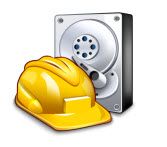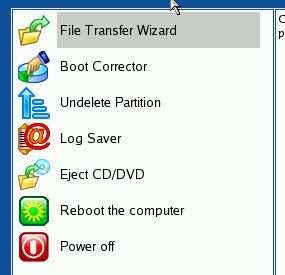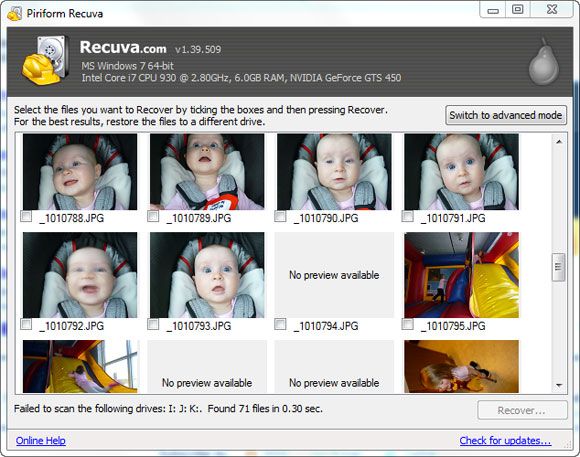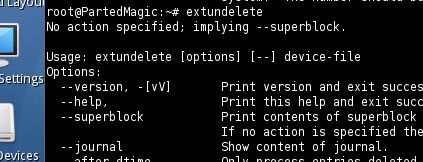I think everyone has had that sinking feeling when you realize you've just made a very...big...mistake. Accidentally reformatting and/or installing a new operating system on the wrong hard drive is one of those things you could do to trigger that kind of a feeling. Or at least I have.
Let's assume for a moment that you threw caution to the wind and have already reformatted the hard drive of your computer. Then, you suddenly realize that no backups are available.
What course of action can you take to save yourself and your entire saved data on your computer from completely drowning due to the split-second mistake? There's still a few lifebuoys out there. Read on to find out.
First: Do not write to the drive!
The first absolute rule you need to know is - do not write to the hard drive if you are planning on recovering data off it. When you write to a hard drive the system drivers randomly write data to the disk. So, when you write to a drive there is a good chance you are overwriting any data on it that you could have possibly restored.
This means do not try to boot from the drive, or if it is an external USB drive do not store any new files on it. Next, you can start thinking of recovery by picking one of the below mentioned options.
Pick Your Recovery OS
Once you install the hard drive in a system and boot to an operating system such as Windows or Mac it will automatically try to access data on the drive. If you have already created a new partition on the drive, this means that it could be writing to the drive without you even knowing about it.
The best solution is to boot using a recovery disk that runs its own OS. This will leave all of the drives on your computer alone until the recovery process is started.
If you are uncomfortable running one of the custom tools, then some of the software listed below can still run right on top of your operating system, and it will still work to scan a reformatted hard drive to recover files.
Best Free Recovery Tools
Paragon Rescue Kit
The best utility for restoring deleted files from a formatted hard drive is Paragon's Rescue Kit. There is a free version and a paid version. For basic tasks, the free version will do.
First you will need to register for a serial number on the site, and download the installer. The installer can either save an ISO file or burn a boot CD directly.
After you boot your system into the Rescue Kit, it will ask you which function you wish to perform.
Select File Transfer Wizard if you want to transfer deleted files off of the drive. This will then open a menu that lets you browse the disk for deleted and non-deleted files and add them to a clipboard. Click Next and then specify where you would like to save them to.
Select Boot Corrector if you are just having problems booting from your hard drive. It will then try a few things to correct the Master Boot Record and booting process on the drive.
Finally select Undelete Partition if you accidentally deleted a whole partition, but haven't overwritten it yet with a new one.
You can search any partition-free space on your hard drive for deleted partitions.
Paragon Rescue Kit is a must-have tool for anyone dealing with PC tech support and can be a real life (and data) saver.
Recuva
If you are already booted in Windows, or if you have a flash drive that needs to have some files restored from it, check out Recuva. It has been reviewed on MakeUseOf before, and is still in active development and a great choice if you are wanting to restore specific files that have been deleted.
For Linux: Parted Magic
Parted Magic is a great tool in general, and it does include a few tools for helping to restore a deleted partition. First, if you want to make a mirror of the drive for data recovery purposes, you can certainly do that as it is a part of Parted Magic's bread and butter functions.
If your computer was running Ubuntu before formatting, it also includes a program called Extundelete. This works to restore deleted ext3 and ext4 files ystems, which Ubuntu uses by default.
Paid Tools
Finally there are a lot of tools that are paid or "Shareware". DiskInternals is one of the best, but the free version will basically show you what it could restore, if you buy the rest of the software. If the options above fail, then it might be a good idea to check it out.
Last Resort?
As a last resort, you can send your hard drive to a recovery specialist. Ontrack is one of the best known and most reliable of these service companies, but they are also very expensive. If you really need your data back, this is probably your last resort. If it is possible to restore the data from your formatted hard drive, these guys will be able to do it.
For Further Help
Title photo courtesy Rev Dan Catt





